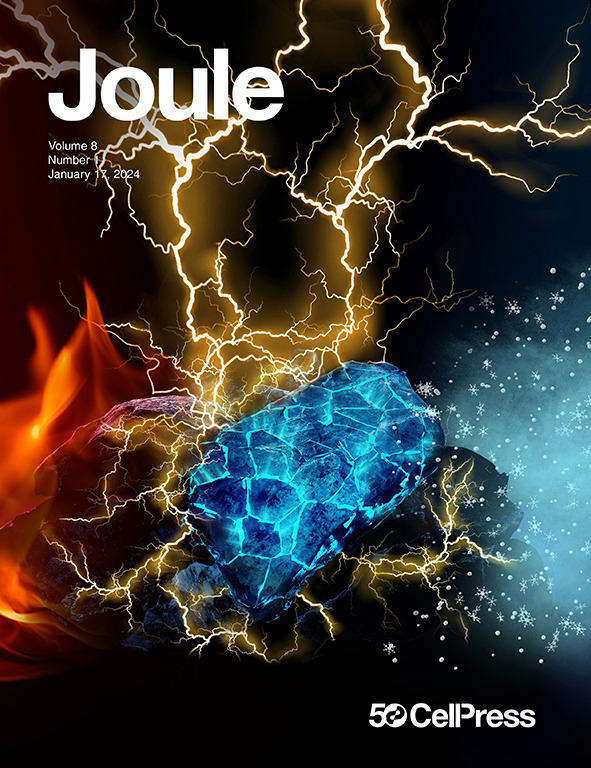锂离子电池成形过程循环寿命预测系统特征设计
IF 35.4
1区 材料科学
Q1 CHEMISTRY, PHYSICAL
引用次数: 0
摘要
锂离子电池制造中形成步骤的优化具有挑战性,因为对固体电解质间相形成的物理理解有限,并且电池达到寿命终点的测试时间很长(~ 100天)。我们提出了一个系统的特征设计框架,该框架需要最少的领域知识来准确预测地层中的循环寿命。仅使用框架设计的两个简单的Q(V)Q(V)特征,从地层数据中提取,无需任何额外的诊断周期,我们就实现了循环寿命预测的平均误差为9.87%。在这两个设计特征的指导下,基于物理的研究表明,我们的框架确定的电压范围捕获了地层温度和微观颗粒电阻非均质性的影响。通过设计高预测性、鲁棒性和可解释性的特征,我们的方法可以加速工业电池形成研究,利用数据驱动特征设计和机制理解之间的相互作用。本文章由计算机程序翻译,如有差异,请以英文原文为准。


Systematic feature design for cycle life prediction of lithium-ion batteries during formation
Optimization of the formation step in lithium-ion battery manufacturing is challenging due to limited physical understanding of solid-electrolyte interphase formation and the long testing time (∼100 days) for cells to reach the end of life. We propose a systematic feature-design framework that requires minimal domain knowledge for accurate cycle life prediction during formation. By only using two simple features designed from our framework, extracted from formation data without any additional diagnostic cycles, we achieved an average of 9.87% error for cycle life prediction. The physics-based investigation guided by the two designed features shows that the voltage ranges identified by our framework capture the effects of formation temperature and microscopic-particle resistance heterogeneity. By designing highly predictive, robust, and interpretable features, our approach can accelerate industrial battery formation research, leveraging the interplay between data-driven feature design and mechanistic understanding.
求助全文
通过发布文献求助,成功后即可免费获取论文全文。
去求助
来源期刊

Joule
Energy-General Energy
CiteScore
53.10
自引率
2.00%
发文量
198
期刊介绍:
Joule is a sister journal to Cell that focuses on research, analysis, and ideas related to sustainable energy. It aims to address the global challenge of the need for more sustainable energy solutions. Joule is a forward-looking journal that bridges disciplines and scales of energy research. It connects researchers and analysts working on scientific, technical, economic, policy, and social challenges related to sustainable energy. The journal covers a wide range of energy research, from fundamental laboratory studies on energy conversion and storage to global-level analysis. Joule aims to highlight and amplify the implications, challenges, and opportunities of novel energy research for different groups in the field.
 求助内容:
求助内容: 应助结果提醒方式:
应助结果提醒方式:


